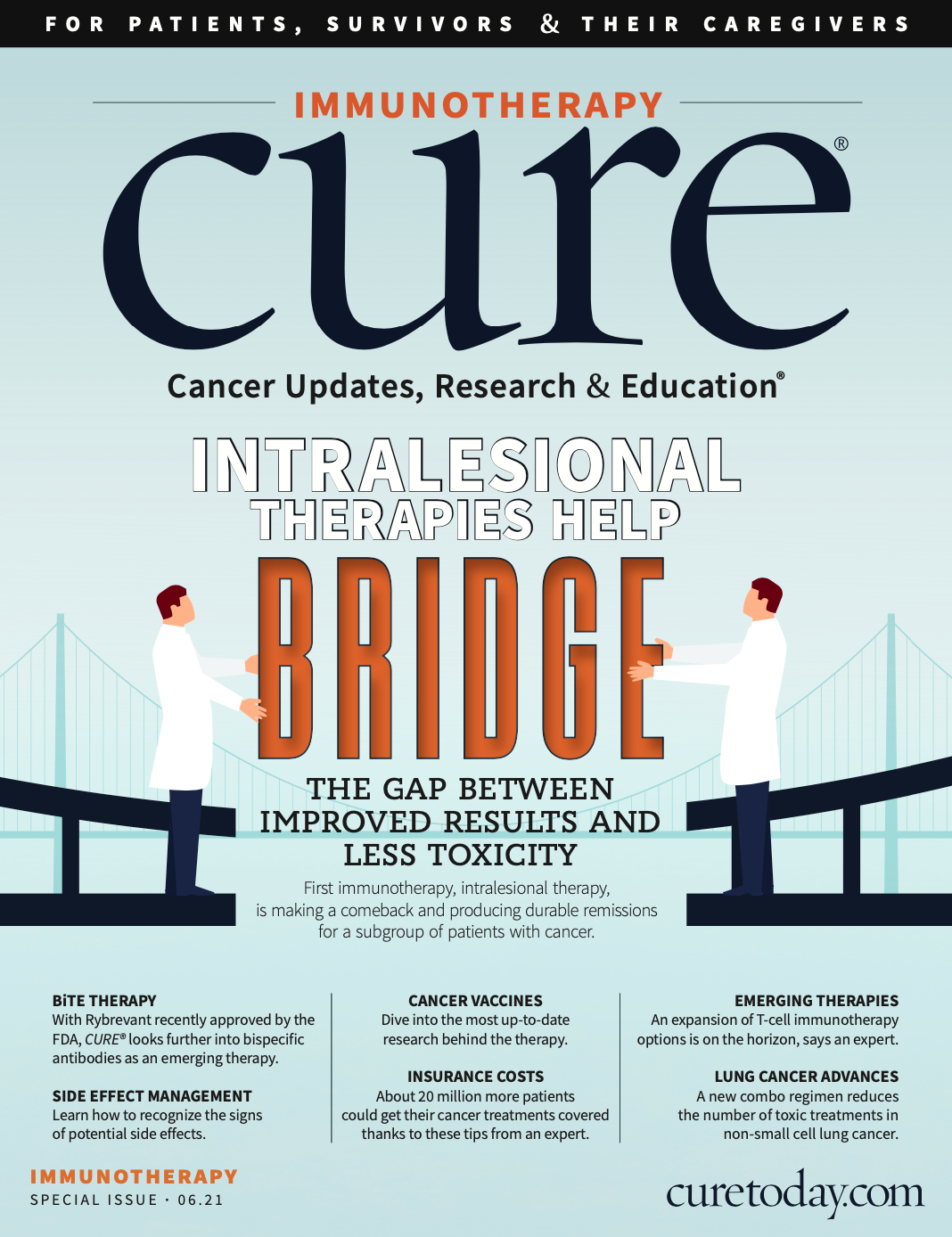Publication
Article
CURE
Standing Firm Against the Financial Burden of Cancer
Author(s):
To avoid the financial burden of costly therapies, patients with cancer receiving immunotherapy treatments should talk with their health care team and not settle for no as an answer from their health insurance provider, according to an expert.
Even with health insurance, immunotherapy — along with many other treatments — can be expensive for patients with cancer. In fact, many immunotherapies cost more than $100,000 a year per patient. Moreover, researchers recently estimated that the cost of oral prescription treatments for cancer will reach $25 billion by 2030.
However, there are steps patients can take to avoid a financial crisis as much as possible, according to Joanna Fawzy Morales, Esq., cancer rights attorney and CEO of Triage Cancer. CURE® recently spoke with Morales about these steps, as well as what other programs may help to alleviate costs.
CURE®: What are some options that patients can look into when it comes to paying for immunotherapy?
Morales: Whenever a patient is considering (a) particular treatment, it’s incredibly important for them to talk with their health care team if they have concerns about what it’s going to cost them. What someone might pay for immunotherapy greatly depends on what type of insurance they have, and how adequate that insurance is. Many people choose their health insurance policy by the monthly premium without understanding the out-of-pocket maximum on a policy, and that’s actually one of the most important things to look at when buying a health insurance. We actually think that one of the primary ways that people can reduce financial toxicity is by having adequate health insurance where they’ve made a conscious choice to pick a plan with the lower out-of-pocket maximum. If you have an out-of-pocket maximum that’s $6,000 a year — some employer plans go up to $20,000 a year — that’s a huge burden for patients to pay out of pocket — especially for a higherpriced treatment, which can include some of the newer medicines like immunotherapies. We want to try to help people address the immediate need for out-of-pocket costs, but we also want to try to help them moving forward. If they’re in a position where they can change plans and actually lower their out-of-pocket, at least we can help address the ongoing financial burden and then just help people address the current cost that they have. Talking with the health care team is going to be very important to address those costs because they might have suggestions on how they can help lower (them). One of those could be talking with the pharmaceutical company that makes that particular drug. There are copay assistance programs that those companies offer to patients to help reduce the copays and other out-of-pocket costs that someone might be experiencing. There are also private foundations and organizations that have financial assistance programs to address those costs.
Are there any private foundations you can highlight here?
Patients can look specifically at cancer-related organizations that are specific to a type of cancer. For example, if you have leukemia or lymphoma, you can look at the Leukemia & Lymphoma Society for their assistance programs. Then, there are organizations that are not disease specific. They include the PAN Foundation or the HealthWell Foundation, which provide different types of financial assistance to help offset those out-of-pocket costs.
What are the top three pieces of advice you can give to patients?
I would say the first thing is to talk with your health care team; express your concern about what it’s going to cost and see if they have suggestions on how to address those financial expenses. The second is to reach out if you need help paying for the bills, because there is help available, but you have to seek it out. You have to actually ask for the help. The third is if you get denied because your health insurance plan refuses to cover your immunotherapy, you should appeal that decision. I often talk about the appeals process as the best-kept secret of our health care system, because most people take no for an answer, and unfortunately, that places a huge burden on patients.
We know that about 42 million claims were denied in 2019, and only 0.02% of those claims were actually appealed. So that’s about 200,000 claims out of 42 million, but we know that when people go through the appeals process and get external appeals, about 50% of the time, across the country, patients are winning those appeals and getting their care covered by their insurance company. Fifty percent of these 42 million claims is about 20 million people who could have gotten their care covered by their insurance company, which means that about 20 million people either paid for care out of pocket that their insurance company should have paid for, which obviously contributes to the financial burden, or they just didn’t get the care because they couldn’t afford to. That’s really tragic — that people aren’t getting access to the care that their health care team prescribed, and they don’t know their rights to appeal.
For more news on cancer updates, research and education, don’t forget to subscribe to CURE®’s newsletters here.




